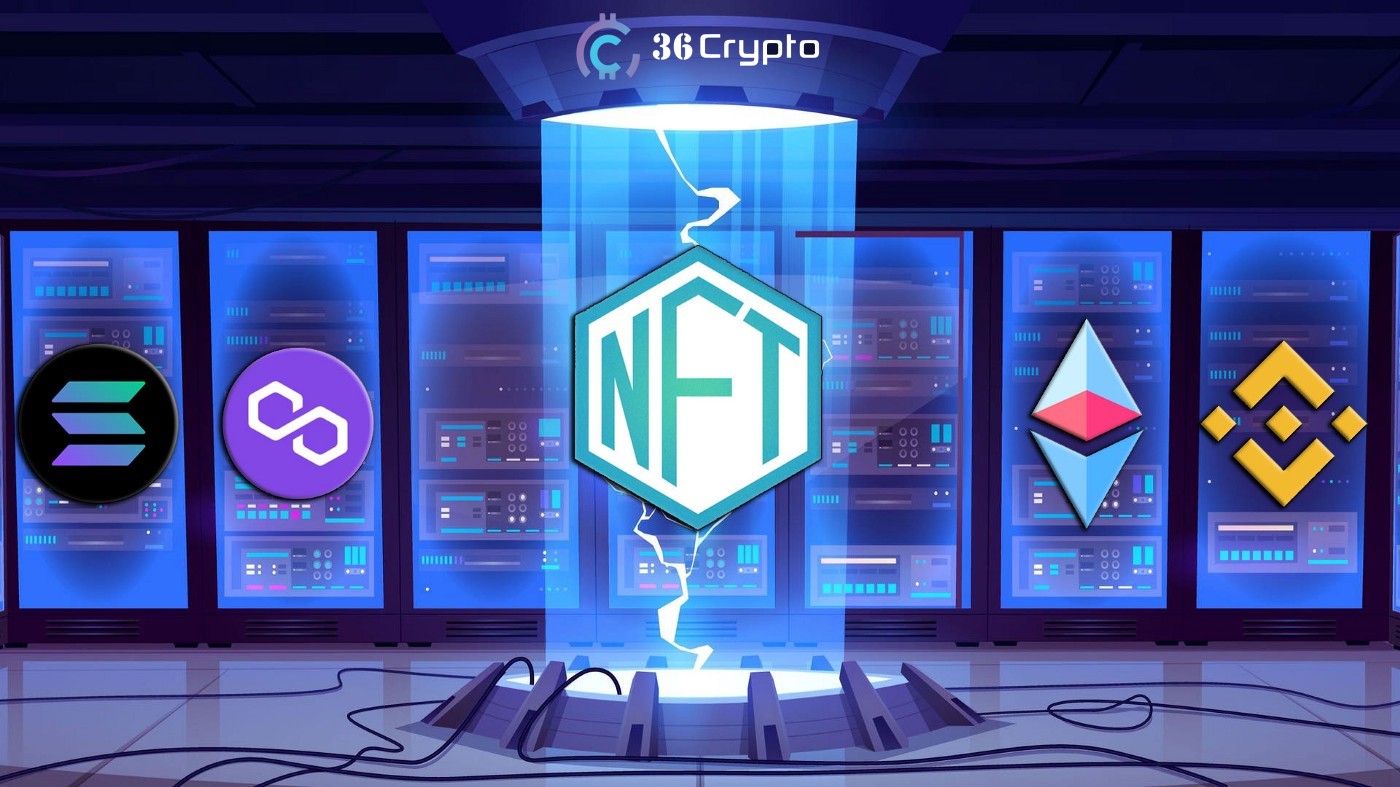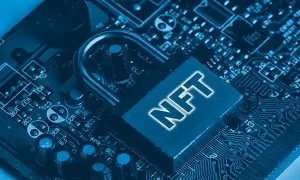Imagine having favorite artwork, a celebrity signed jersey, or a video of a moment in basketball or a soccer game in a unique digital form. Wouldn’t it be awesome? Well, that opportunity exists now, thanks to NFT(NON-FUNGIBLE TOKEN).
If you are interested in NFTs and want to know more about what they are and their use case, you have come to the right place. In this article, 36crypto will give an insight into what NFTs are and how they work.
Related: Top NFT Marketplaces to Trade NFTs
What is NFT(NON-FUNGIBLE TOKEN)?
An NFT is a noninterchangeable cryptographic asset that exists on a blockchain with unique metadata showing ownership of real-world items like artwork and real estate, individuals’ identities, and property rights.
NFTs are digital assets with unique identification codes that can be easily tracked to verify the authenticity and security of a specific digital asset.
Unlike cryptocurrencies, they cannot be replicated, traded, or exchanged at equivalency. This means that one NFT cannot have the same trading amount as another which is a different case to cryptocurrencies that have equivalent amounts with each token.
NFTs are created using the same type of programming used for cryptocurrencies, the blockchain technology.
How Does NFT Work?
To understand how NFTs work you need to know the ways blockchain technology the backbone of cryptocurrencies works. While blockchain networks support both NFTs and cryptocurrencies, the fundamental difference is in their fungibility.
Cryptocurrencies are fungible assets that can be swapped for another within a category without changing the value. For instance, one bitcoin can be traded and is equivalent to another bitcoin. NFTs are different entirely as each one is unique, has its value, and cannot be traded in equivalence to another, whereas the term ‘Non-fungible’.
NFTs are made through a pay-per-use pay-per-use process known as “minting,” in which they generate a representation of their file on a blockchain network. These networks keep records tracking every transaction done with it. The network mostly used for NFTs is Ethereum, others include Solana, tezos, Icp, etc.
Once an NFT is minted, it can be bought, sold, or traded on exchange platforms known as Marketplace. Some of the popular marketplaces are Opensea, Rarible, Magic Eden, etc.
Examples of NFTs
NFTs exist in many forms. They can be in form of Artwork, digital collectibles, in-game items, essays, sneakers, music, images, and videos. The digital artworks can be reproduced and shared widely across the internet, but the original physical piece is still owned by the creator. Royalties in form of commissions are paid to the creators whenever NFTs are bought and sold.
The most famous use case for NFTs is that of cryptokitties which was launched in November 2017. Cryptokitties are digital representations of cats with unique identifications on Ethereum’s blockchain. Each kitty is unique and has a price in ether. They racked up $20 million worth of transactions.
NFTs have been used in private equity transactions as well as real estate deals where investors own digital real estate worth a fortune. Decentraland is one of the real estate NFT companies that pioneered the incorporation of real estate into digital lands and assets.
What is NFT Used For?
NFTs have many use cases which can be attributed to their general acceptability in the real world. Investors interested in Crypto-trading and artwork collectors often use NFTs. Some other uses of NFTs include:
Digital Content – NFTs today are used in digital content creation. Content creators see their profits enhanced by NFTs.
Gaming Items – In an online game, you can buy items such as weapons, outfits, or special characters in form of NFTs, and make money by selling the items in in-game marketplaces.
Investment and Collaterals – NFT let you borrow money by using them as collateral. They can also be used for investment purposes. When the values of NFTs increase they can be sold to make money.
How to Buy NFTs?
Before one engages in buying NFTs, there is a need to have a digital wallet that allows you to store your NFTs and cryptocurrencies. Cryptocurrency is needed to buy NFTs. The most used is ether as most NFTs are created on the Ethereum blockchain.
Platforms like Binance, Coinbase, Kraken, PayPal, etc., are available to buy cryptocurrencies. Once you’ve made your cryptocurrency purchase, you can move it from the exchange to your wallet.
Marketplaces are where NFTs are traded and need to be linked to your wallet before you can buy NFTs. Examples of marketplaces are Rarible, Opensea, Magic Eden, etc.
Conclusion
It is very important to make thorough research on the NFT you want to invest in. In as much as there is a huge favorable market in the NFT space, there are NFT scams that may rip you of your hard-earned money.
NFT trading is an emerging market and is highly speculative. Some NFTs may rocket higher in value, but there’s no guarantee. The value of digital art and collectibles works much the same as physical art and collectibles: Value is subjective and determined by factors such as uniqueness and the reputation of the artist who made it and also the community that projects the NFT.



